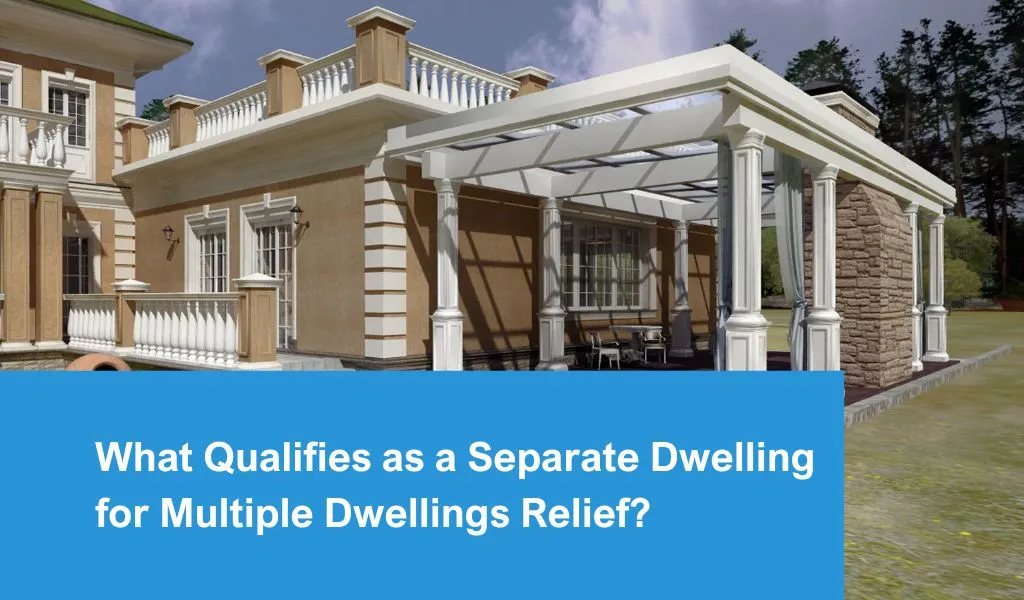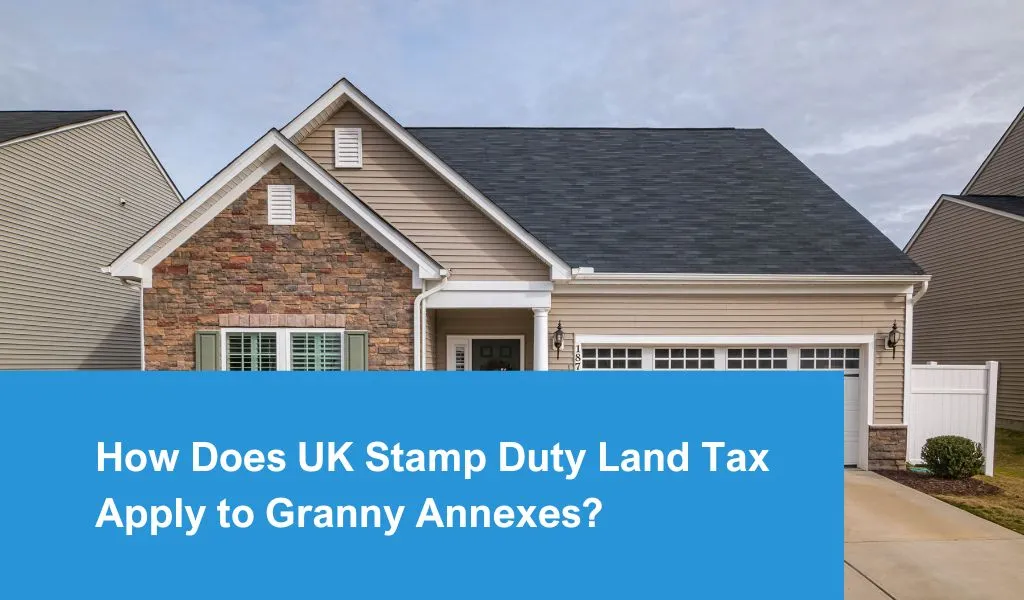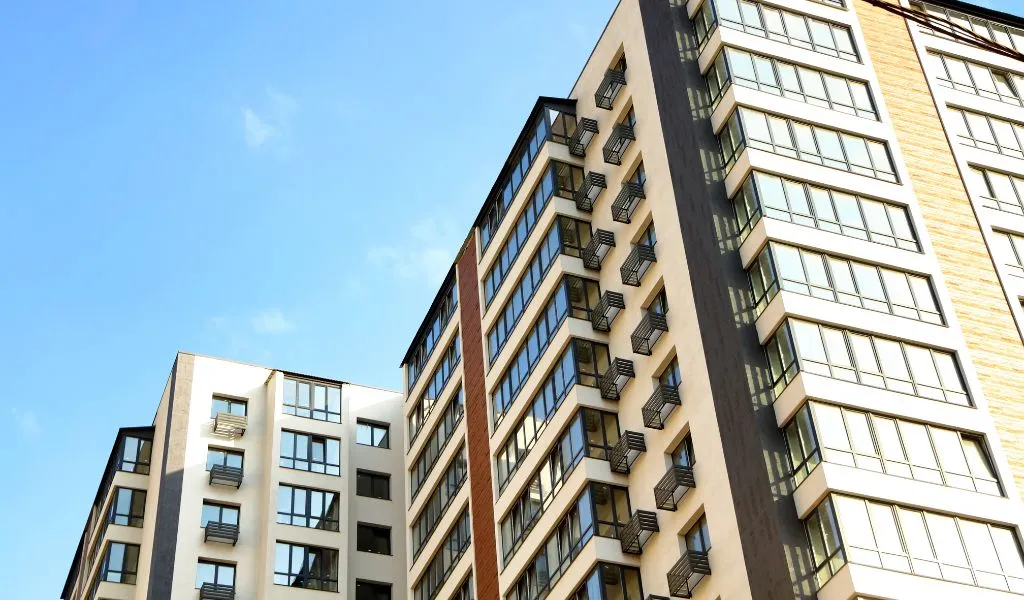A secondary building, which is mostly located in the garden area of the primary home, is called a granny annexe. If you are interested in buying such type of secondary home, then you might have heard of Stamp Duty Land Tax(SDLT)? The real question is: how does UK Stamp Duty Land Tax apply to granny annexes?
The purpose of this blog is to share information about the Multiple Dwellings Relief that is obtainable for SDLT. Which results in you saving on your tax bill. Honestly, we all could use as much as saving as possible on our tax bills.
What is Granny Annexe?
Any living space that is specifically designed to accommodate residents comfortably as they are self-reliant and cost-effective. Properties that fall under the category of granny annexe are attractive to families who wish to accommodate their elderly relatives and to anyone who wants to generate extra income by renting out.
An annexe usually includes the following features:
- Has its own entrance
- A separate living space
- Basic facilities such as a kitchen, bathroom, and laundry area
This type of property may have higher market value in comparison to a main house as they have added facilities.
The best part about granny annexes is that you can get Multiple Dwellings Relief on your Stamp Duty Land Tax(SDLT). Which means those who qualify for it can benefit from considerable savings.

What Qualifies as a Separate Dwelling for Multiple Dwellings Relief?
The criteria for qualifying for the relief include the following:
- At least two dwellings can be more than two
- Bought through a single transaction
- Each dwelling is independent
Furthermore, granny annexes have their own facilities. Which includes the living and sleeping area,
This implies that the granny annexe must have its own private, self-contained amenities, including a living and sleeping area, access to and control over basic utilities, a separate kitchen, and a bathroom area.
To qualify as a separate or independent dwelling, the following criteria are required:
Aptness for Usage as a Dwelling
The living conditions of each dwelling should be such that they meet the basic domestic needs of the residents. The basic concept is that the dwelling should be able to exist on its own.
Separate Entrance
They must separate the entrance to the dwelling from the main entrance. It can be located outside the building or simply separated from the main entrance.
Manage Utilities
An individual dwelling must include essential utilities such as heating, electrical facilities, water, etc. Additionally, a separate dwelling must have control over the utilities they have access to.
Separate Letter Boxes and Bills
If a property has separate letter boxes and bills, they may indicate a separate dwelling. Yet it is not enough to be certain. If there are not any separate bills or posts, it is not a determining factor indicating the lack of a separate dwelling.
Privacy
Residents should maintain the privacy between the dwellings. In case there is a door connecting the dwellings, then locks on both sides of the door are necessary.

How Does UK Stamp Duty Land Tax(SDLT) Apply to Granny Annexes?
The method used to determine the applicable Stamp Duty Land Tax(SDLT) on the average property price for Multiple Dwelling Relief is to divide the total cost of the residential property by the number of units purchased.
The number of acquired homes is then multiplied by the resultant average SDLT amount.
Consider the following example to understand taxation on annexes:
Ms Mullaney paid £1 million for her second home, which included a main house and a Granny Annexe.
If she does not apply for Multiple Dwellings Relief, she will often be required to pay the SDLT based on the entire cost of the home, which comes to £71,250.
If her granny annexe is a distinct residence, she can apply for Multiple Dwellings Relief and have two dwellings; in this case, the stamp duty and land tax due would be £55,000.
Ms Mullaney reduced her SDTL in this case by £16,250.
As you can see, for buyers of a house with a granny annexe, Multiple Dwellings Relief can result in considerable savings on the Stamp Duty and Land Tax(SDLT) cost.
How much will it Cost to Construct a Granny Flat?
The cost will change based on…
- your annexe’s size
- its intricate design
- the amount of glass
- its location in the UK
Additionally, you’ll save a lot of money if you’re renovating a present outbuilding or garage to build your granny annexe.
Be mindful that you need to try to maintain the granny annexe close to your primary structure. It’s doubtful that you will be able to make a connection to your mains if it is more than 10ms distant.

Do you Require Planning Permission for your Granny Annexe?
Building a habitable extension to your garden requires planning permission. If you want to use the building for overnight accommodation and/or build an independent residence, regardless of size or shape, you must apply for annexe planning permission and comply with building regulations. If you are moving into a single-family home, you may need planning permission for a change of use. Planning permission is not required in case of a shed, summer house or garden office.
For help with planning, scheduling, and approval, consult an experienced planning consultant in your area. Find a local planning consultant to help with your project.
Do you Need an Architect to Develop a Granny Annexe?
There is no law that states that you need to hire an architect. The builder should be able to recommend a project that will do the job for you. Alternatively, an experienced architect can talk about what you are trying to achieve in your granny flat and provide a design tailored to those needs.
They can also process your annexe planning permission application. Plus, expert design means you get the most space and style for your budget. This means that when you sell your home in the future, you will get the best return on your investment.
Who is the Concerned Party?
In essence, you may target developers purchasing larger collections of homes to renovate and/or remodel and investors wishing to expand their BTL portfolio. But in recent years, a third expanding sector that MDR may also connect to has emerged: supplements.
Multigenerational families are becoming more common as the cost-of-living increases and the first rung of the housing ladder becomes increasingly out of reach for younger people.
As a result, a “granny annexe”—some independent residence that is a part of the larger property—is sometimes created so that elderly relatives or children saving for a down payment can live there. It may be possible to get MDR by considering the annexe as a separate residence if the secondary property is separate from the main property.
What Should you Keep an Eye on?
When a property (such a block of apartments) is not immediately clear to be subject to MDR, other variables start to matter. Larger homes with several smaller cottages or apartments on the grounds, etc., will perhaps qualify at the high end of the market, as an example.
You need to take a close look at the dwelling itself at the more affordable end of the market. Does the annexe have a separate lockable door? Does it have a separate kitchen and bathroom? Is it a separate house from the main house?
How Much will you Save?
As mentioned above, the price paid, and the quantity of annexes (also known as “subordinate dwellings”) will determine how much you can save. Depending on the costs paid, an annexe might save anywhere between £50,000 and £87,000.
What are the Next Steps?
Using a professional’s assistance in any tax situation is the best method to guarantee that you pay the correct amount and prevent a drawn-out argument with HMRC.
Conclusion
The SDLT that would often be owed when acquiring many “dwellings” in a single transaction is unquestionably reduced by Multiple Dwellings Relief, or “MDR.”
If you are purchasing two or more homes or residential properties in one transaction, or in a chain of connected transactions, it is advisable to apply for Multiple Dwellings Relief.
Due to the complexity of SDLT and the potential for overlooked reliefs, it could be beneficial to evaluate transactions. To ensure that you adhere to the regulations of this complex field of how UK Stamp Duty Land Tax(SDLT) apply to granny annexes, it is also worthwhile to make the extra time and financial investment to consult with a qualified property tax accountant, lawyer, and conveyancer.
There is a risk of underpaying or overpaying tax in this area of tax planning, which might lead to retroactive tax bills, possible fines for tax evasion, or the difficulty of retroactively recovering overpaid tax.


